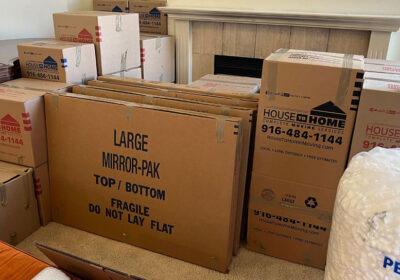 Did you know:
Did you know:
September was the seventh month of the original Roman calendar. This is where it got its name which means seventh. Later, when January and February were added to the calendar it became the ninth month.
Clear roof and gutters from leaves
One of the most important fall chores and many times overlooked is cleaning your gutters in preparation of temperatures below freezing. Clogged gutter lanes or clogged downspouts can cause some major damage to either your gutter, or to your roof. Wet leaves turn into frozen leaves and since water expands as it freezes, this will cause your gutters to warp.
Lay mulch for winter frost prep
The main idea behind winter mulching is to keep the ground frozen by shielding it from the warmth of the sun. A steady temperature will keep the plant in dormancy and prevent it from triggering new growth during a brief warm spell. Tender, new growth too soon will just result in more winter dieback. Mulching now will also help conserve whatever water is in the soil, so hopefully, you’ve been keeping your garden beds watered right up until the hard frost.
Trim back flowering plants
Most plants benefit from regular, annual pruning. Though the task of trimming beautiful foliage is hard for home gardeners to swallow, pruning keeps plants healthy and encourages fresh, new growth.
Prune trees and shrubs near house
When spring is in the air, you might be itching to get outside and do a little yard work. Pruning is a perfect chore for late-winter and early spring because most trees and shrubs are dormant.
Prep and clean fireplace
Using a shop vacuum (not a regular vacuum, because the fine ashes can clog the filter), I suck up as much debris and ash as possible — inside, on the bottom and walls, and around the outside base. For the fine layer of soot that remains, I use several damp paper towels to wipe it away. Next, with a handled scrub brush and a bucket of warm water with detergent (a squirt or two per gallon of water), I scrub the inside floor, followed by the sides — doing one small spot at a time and rinsing before moving on. Last, I rinse it all with water on a sponge or a terry cloth and wipe dry with an old towel. A final safety hint for folks who may use their fireplaces frequently: Have your chimney inspected by a pro each year.
Check for air leaks in attic
From below your attic, check the ceilings and note the locations of all light fixtures, ceiling fans, and electrical outlets. From the attic-side of your ceiling, find the fixtures you noted. You’ll have to pull back existing insulation to find them. Electrical connections for fixtures, fans, and outlets require a hole cutout in your ceiling drywall. Each of these cutouts is a likely air leak. You can stop air leaks by sealing the cutouts from above with acrylic latex or silicone caulk, or with low-expansion polyurethane foam, depending on the size of the gap.



